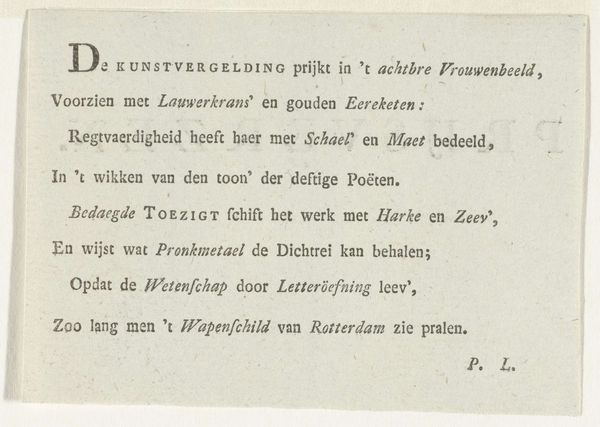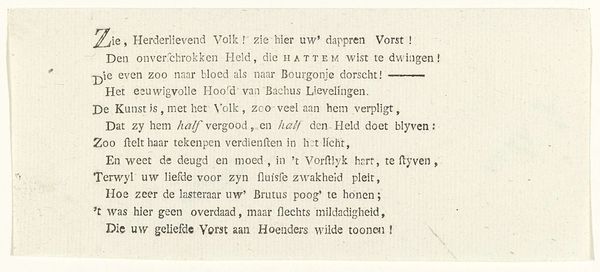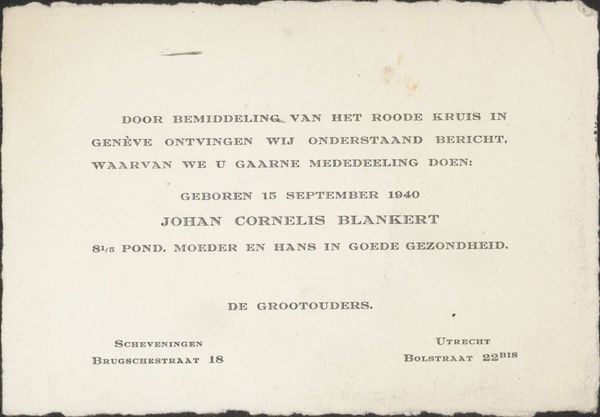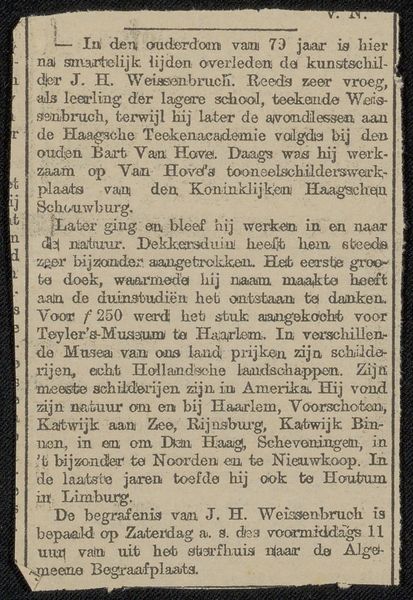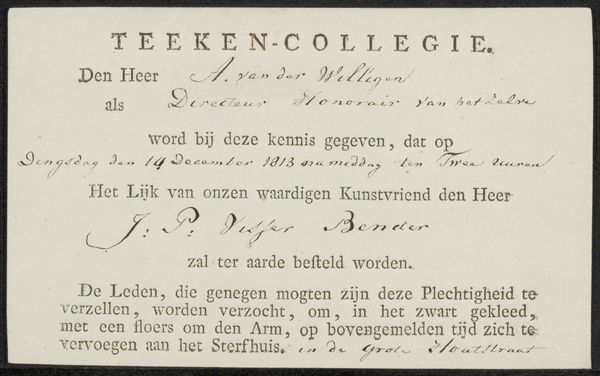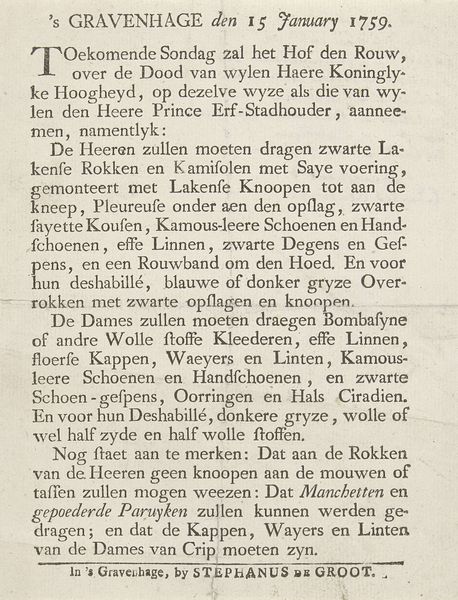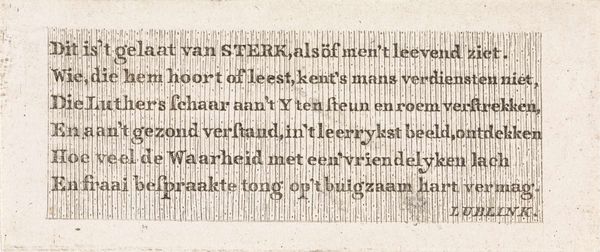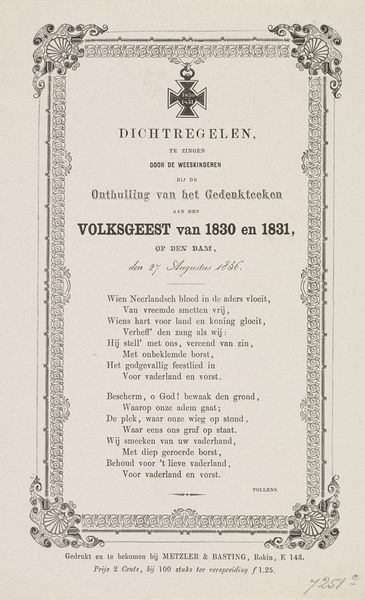
print, textile, engraving
#
hand written
# print
#
old engraving style
#
hand drawn type
#
hand lettering
#
textile
#
hand-written
#
hand-drawn typeface
#
fading type
#
script
#
ink colored
#
engraving
#
small lettering
Dimensions: height 66 mm, width 151 mm
Copyright: Rijks Museum: Open Domain
Curator: Here we have "Vers ter nagedachtenis aan Adolf Frederik van der Scheer," created in 1811 by an anonymous artist, an engraving on textile. Editor: At first glance, I’m struck by the simplicity of its presentation. It evokes a sense of somber reflection. The text feels quite fragile, like a whisper from the past. Curator: It is a poem, an epitaph of sorts, printed to commemorate Adolf Frederik van der Scheer. We can understand this work through the lens of grief and remembrance in early 19th-century Dutch society. Death was ever-present, with high infant mortality rates and relatively low average life expectancy. Ritualized mourning practices provided a channel to contextualize individual experiences of grief against the broader framework of life and loss. Editor: The poem speaks of faith, loss, and a crowned "friend." These repeated elements—God, belief, hope—really underscore the central theme of Christian faith in facing mortality. Considering its time period, the symbol of a crowned friend is interesting; I'm not sure if this is an allegory for a divine figure like Jesus Christ or alludes to the personal life of the deceased. It might also imply the beliefs and hope for salvation in heaven. Curator: Absolutely, faith would have offered considerable solace. And that final line, “De hoop van weertezien doet zwijgen in haar lot”-- "the hope of seeing again silences her fate"-- speaks volumes about coping with the loss. Considering it's presented as textile art suggests that it might be have been made into a memorial cloth to hang in one’s home. Editor: Yes, that resonates. The act of engraving the poem on a cloth transforms the inscription into a more permanent, tangible memento. Each letter becomes symbolic and intentional through that careful engraving process, emphasizing cultural memory over the long term. Even today we read a clear reminder of human existence—birth, faith, death, and hope. Curator: Looking at the piece now, through the framework of how communities then made space for collective sorrow, it also shows a community's attempt to weave memory into the social fabric through these tangible means. It is fascinating how objects can stand as proof for what was deemed culturally valuable to that particular time. Editor: I agree. Its poignant message certainly invites us to reflect on mortality in light of our shared humanity.
Comments
No comments
Be the first to comment and join the conversation on the ultimate creative platform.

